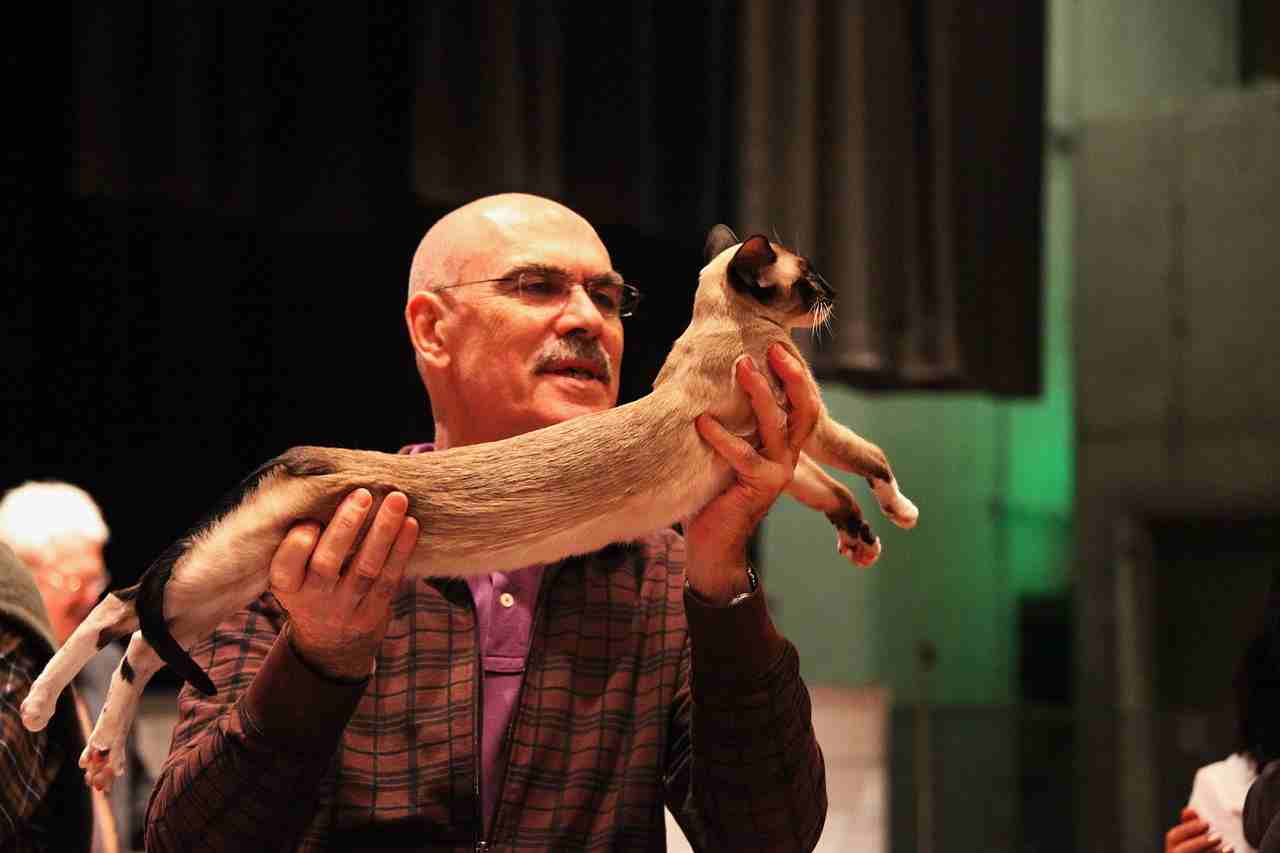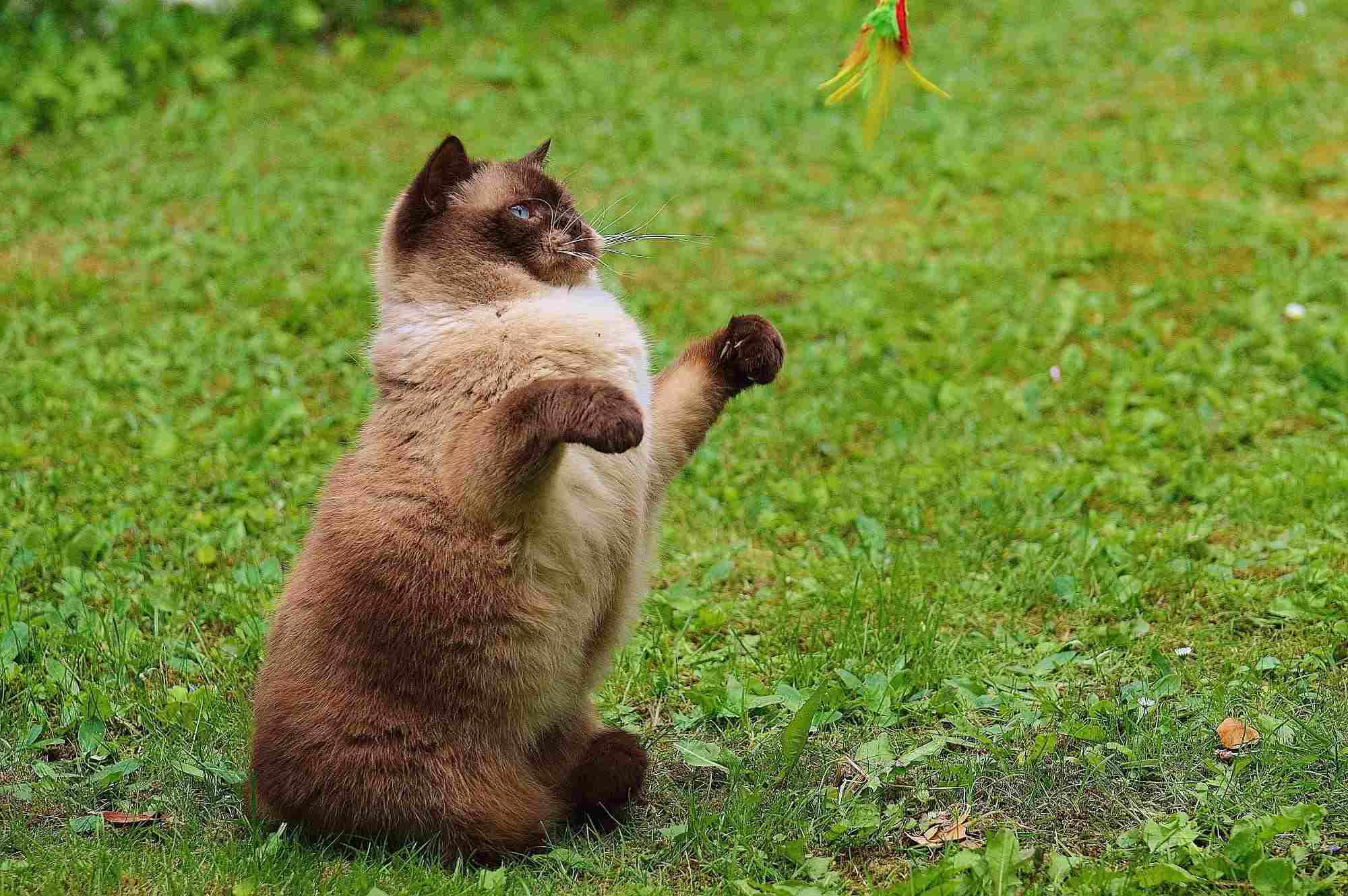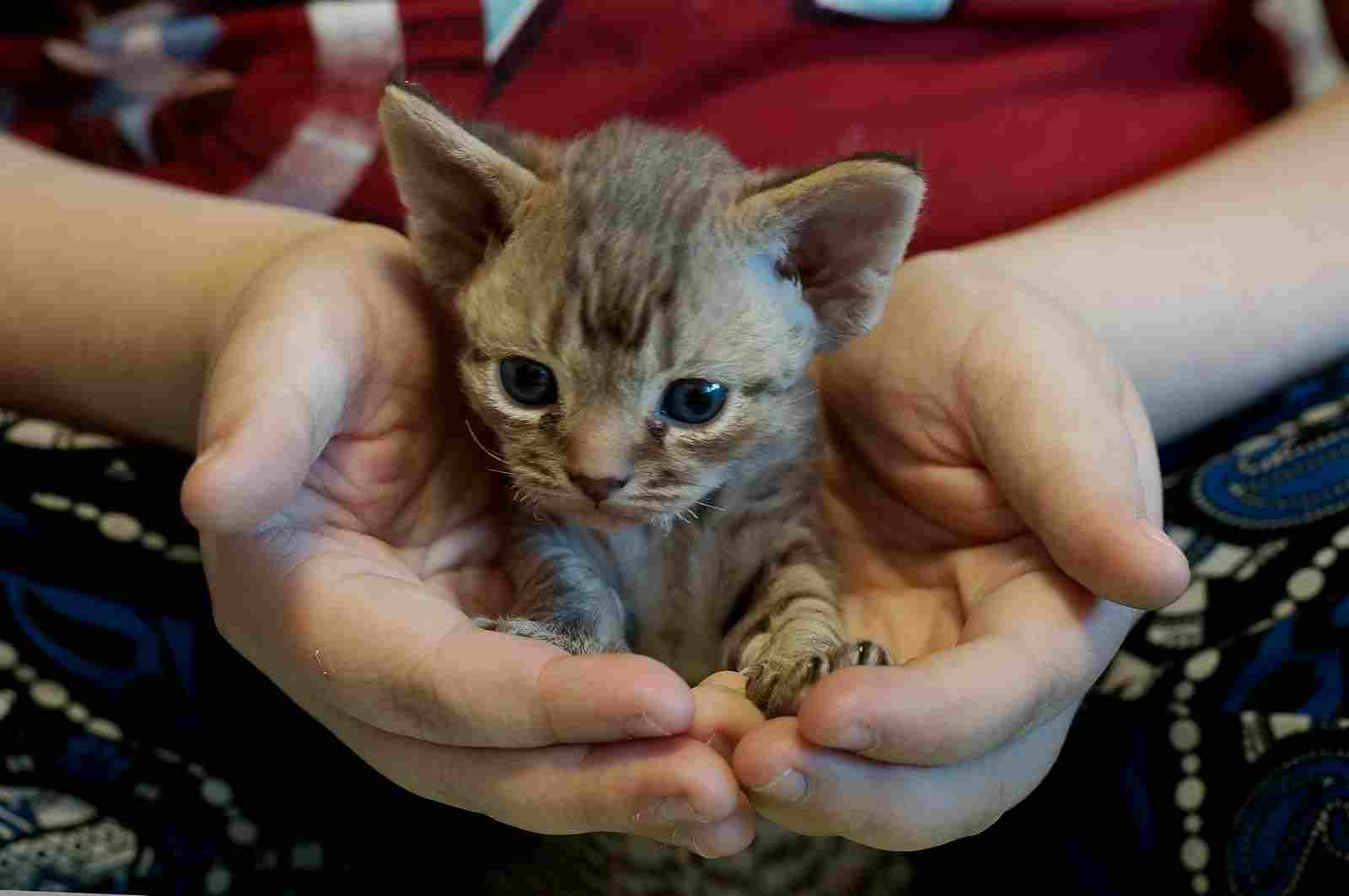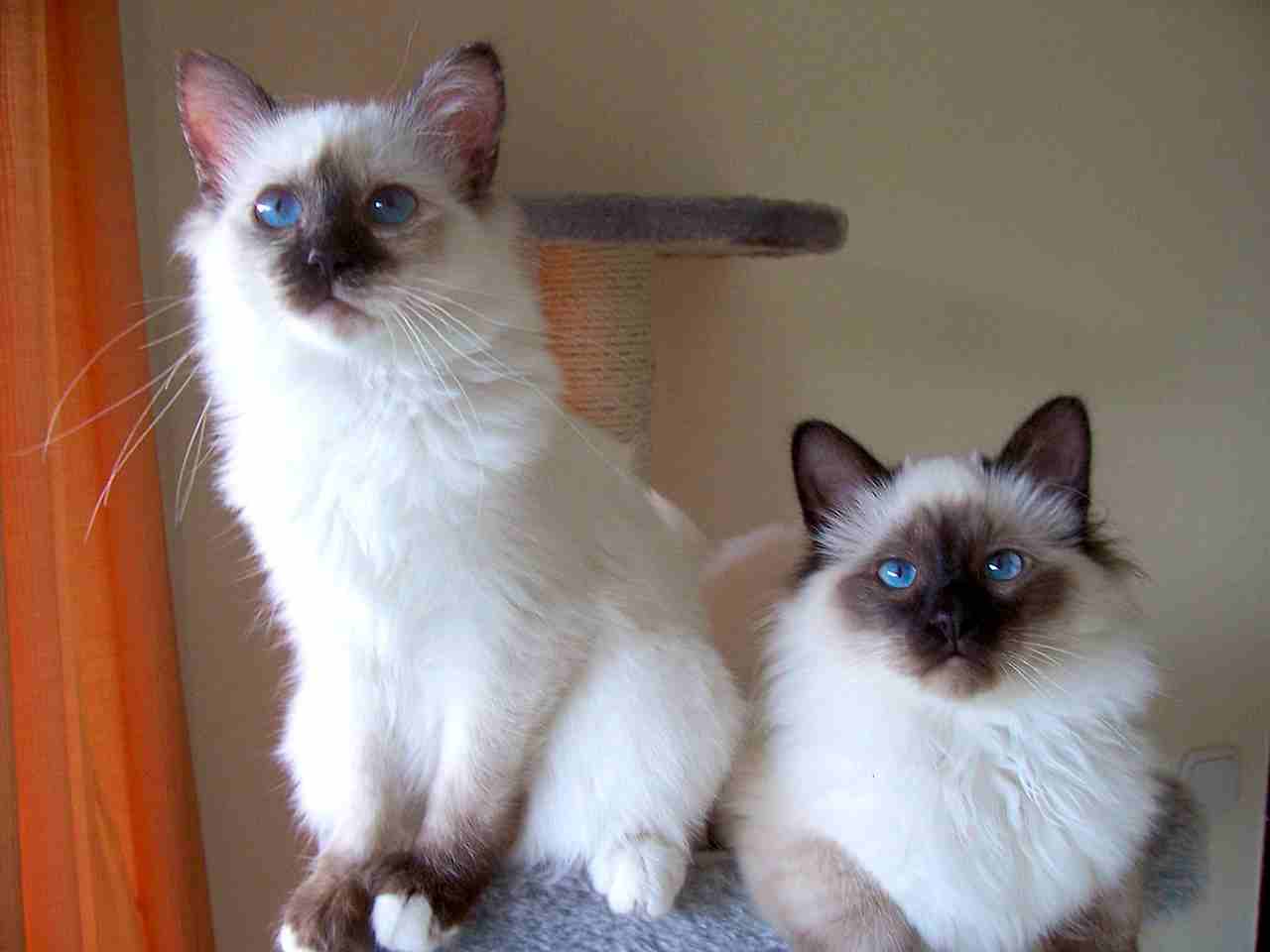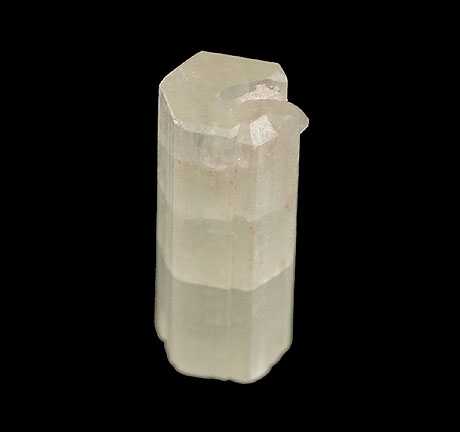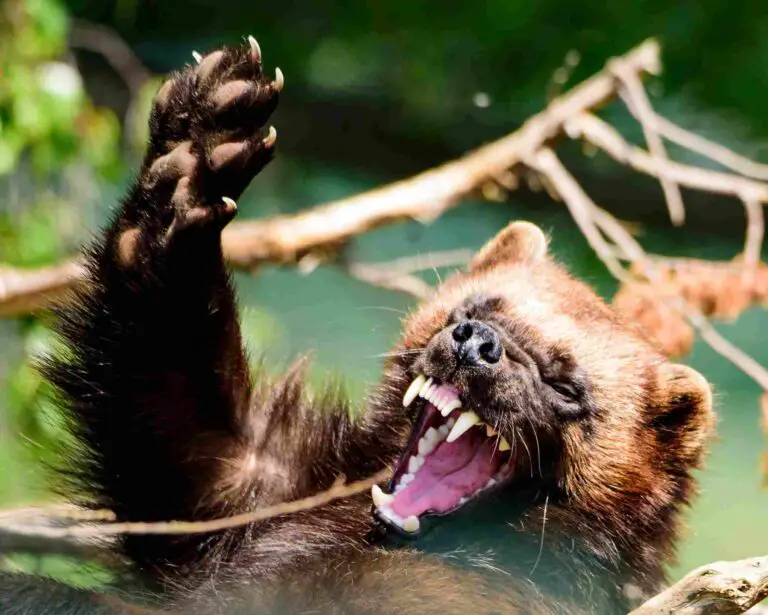Siberian Cat Vs Ragdoll Cat Personality, Size, Weight, Overall Comparison
Comparing Siberian and Ragdoll cats reveals distinctive traits in their personalities, fur characteristics, size, and pricing. While both breeds share playfulness, Siberian cats stand out with a more active and assertive demeanor, contrasting with the gentle nature of Ragdoll cats. Additionally, differences in fur shedding, size, and pricing contribute to the unique appeal of each breed.
I. Personality Traits:
– Siberian cats are known for their more active and assertive personalities, showcasing a dynamic and engaging demeanor. In contrast, Ragdoll cats exhibit a notably gentle nature, emphasizing a calm and docile temperament. Both breeds, however, share a playful disposition.
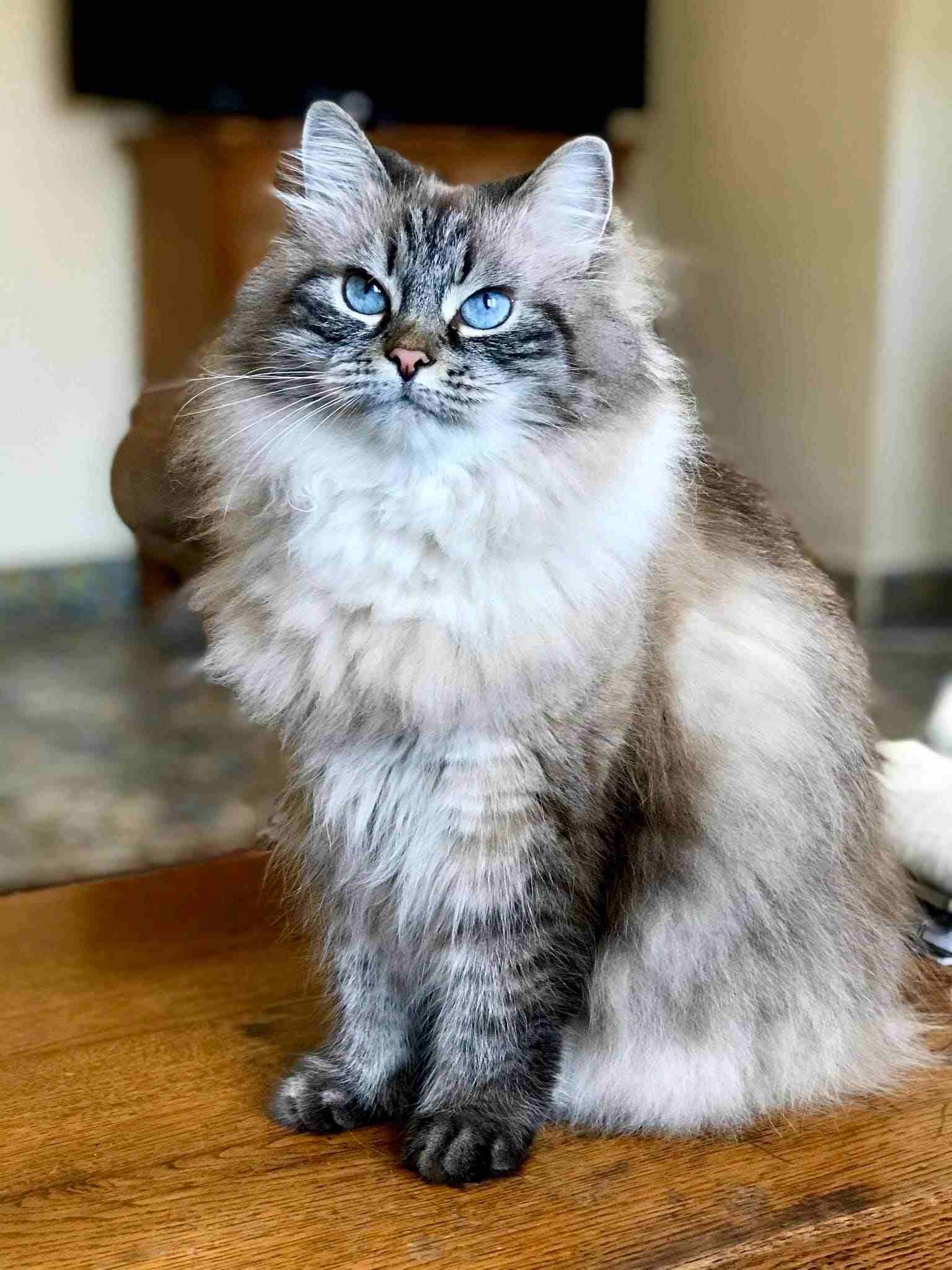
II. Fur Characteristics:
– Ragdoll cats, like Siberians, boast long fur, contributing to their luxurious appearance. However, Ragdolls tend to shed less than Siberian cats, offering a potential advantage for those seeking a lower-maintenance option.
III. Size Disparities:
– Ragdoll cats are notably larger than Siberian cats, with a more substantial frame and a majestic presence. The size difference adds to the distinct physical characteristics of each breed.
IV. Pricing Variations:
– Siberian cats generally come with a higher price range, starting from over $1000 and reaching up to over $4000. On the other hand, Ragdoll cats are typically priced between $800 and $2000, providing a range of options for those considering these unique and charming feline companions.
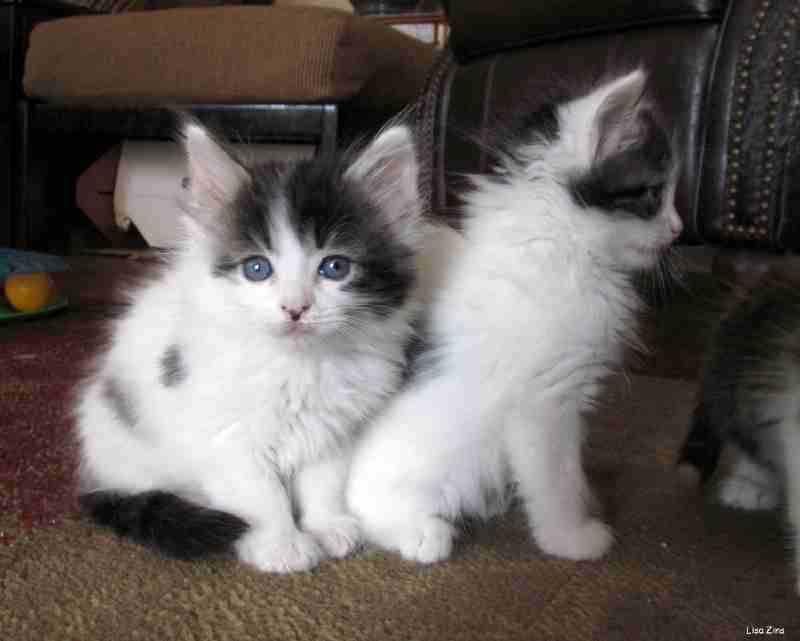
V. Appreciating Breed Diversity:
– Recognizing the distinctions between Siberian and Ragdoll cats allows potential owners to appreciate the diverse qualities within these popular breeds. Whether it’s the active assertiveness of the Siberian or the gentle demeanor and larger size of the Ragdoll, each cat brings its own unique charm to the world of feline companionship.
*Details of Comparison
| Criteria | Siberian Cat | Ragdoll Cat |
| Appearance | Varied coat colors and textures |
Color-point patterns, limited variations
|
| Size | Medium to large | Large |
| Weight | Males 15-20 lbs, Females 8-15 lbs |
Males 15-20+ lbs, Females 10-15 lbs
|
| Personality | Playful, social, may exhibit dog-like behaviors |
Calm, docile, affectionate, “puppy cat” demeanor
|
| Relative Price/Cost | $1,000-$2,000 | $1,500-$3,000+ |
| Grooming and Maintenance | Regular grooming, may need more attention |
Regular grooming, particularly due to long fur
|
| Health Concerns | May be prone to hypertrophic cardiomyopathy |
May be prone to hypertrophic cardiomyopathy
|
| Bite Force (PSI) | Limited documented data, moderate for domestic cats |
Limited documented data, moderate for domestic cats
|
| Physical Offensive Advantages | Agile, strong, sharp claws |
Larger size, strong hind legs
|
| Physical Defensive Advantages | Agile, thick fur, keen senses |
Laid-back demeanor, thick fur, agility
|
| Speed | Estimated 30 mph |
Estimated 25 mph
|
| Agility | Highly agile, good balance |
Agile despite larger size
|
| Senses | Good night vision, hearing, sense of smell |
Good night vision, hearing, sense of smell
|
| Overall Physical Capacity | Muscular, enduring, adapted to colder climates |
Larger size, strong, adapted to indoor living
|
| Habitat Preference(s) | Adaptable to various environments |
Suited for indoor living
|
| Tracks | Distinctive tracks; size and claw marks differ |
Distinctive tracks; size and claw marks differ
|
| Lifespan | 12-15 years | 12-17 years |
| Natural Mode of Feeding | Carnivorous, Siberian may have stronger hunting instincts |
Carnivorous, more dependent on domestic feeding
|
| Best Food as a Pet | Balanced, high-protein diet |
Balanced, high-protein diet
|
| Intelligence | Highly intelligent, problem-solving |
Intelligent but laid-back
|
| Social Behavior | Social, may form strong bonds with family |
Extremely affectionate, forms deep bonds with owners
|
| Mode of Reproduction | Sexually reproducing, litters of kittens |
Sexually reproducing, litters of kittens
|
| Parental Behavior | Shows strong maternal instincts |
Generally exhibits good maternal instincts
|
| Proximity to Human-Inhabited Areas | Adaptable to rural and urban |
Suited for indoor living
|
| Behavior Toward Humans | Affectionate, enjoys interactive play and attention |
Extremely affectionate, often seeks human companionship
|
| Danger Posed to Humans | Low danger, not aggressive |
Low danger, not aggressive
|
| Associated Precautions | Regular veterinary care, attention to dental care, monitoring outdoor activities |
Regular veterinary care, grooming attention, mental stimulation for indoor living
|
| Conservation Status | Not listed as endangered or threatened |
Not listed as endangered or threatened
|
Key Points
- Siberian cats are generally more agile and playful, while Ragdoll cats are larger and more laid-back.
- Ragdoll cats have a higher price range compared to Siberian cats.
- Both breeds require regular grooming, but Ragdoll cats need more attention due to their long fur.
- They share similarities in health concerns, with a potential predisposition to hypertrophic cardiomyopathy.
- Siberian cats may have a more varied diet with stronger hunting instincts compared to Ragdoll cats.
- Ragdoll cats are exceptionally affectionate and seek intense human companionship.
- Conservation status is not applicable as they are domesticated breeds.
- Both breeds are low in danger to humans, exhibiting a generally calm demeanor.
1. Taxonomy:
Siberian Cat:
Kingdom: Animalia
Phylum: Chordata
Class: Mammalia
Order: Carnivora
Family: Felidae
Genus: Felis
Species: F. catus (domestic cat)
Ragdoll Cat:
Kingdom: Animalia
Phylum: Chordata
Class: Mammalia
Order: Carnivora
Family: Felidae
Genus: Felis
Species: F. catus (domestic cat)
2. Appearance:
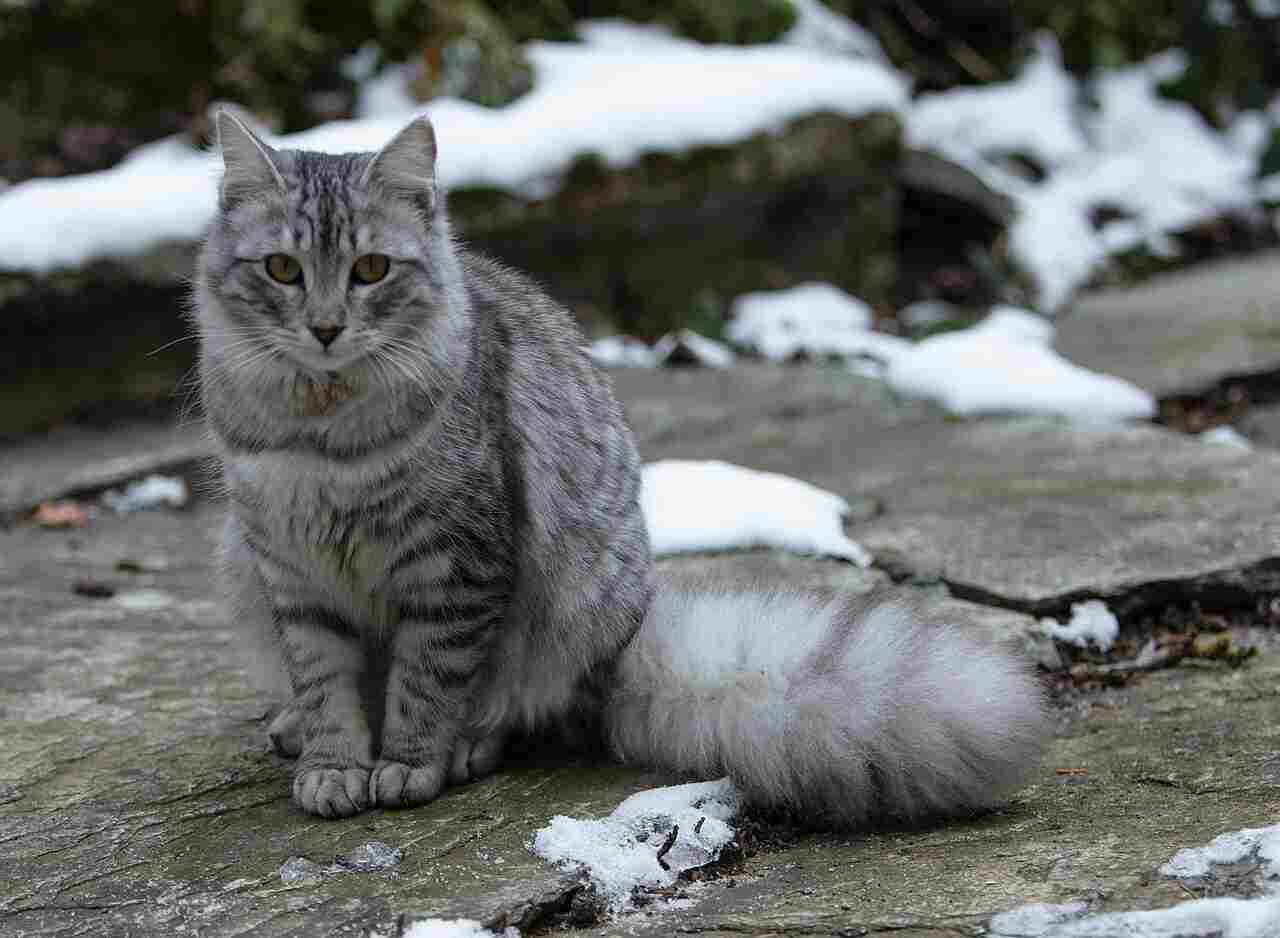
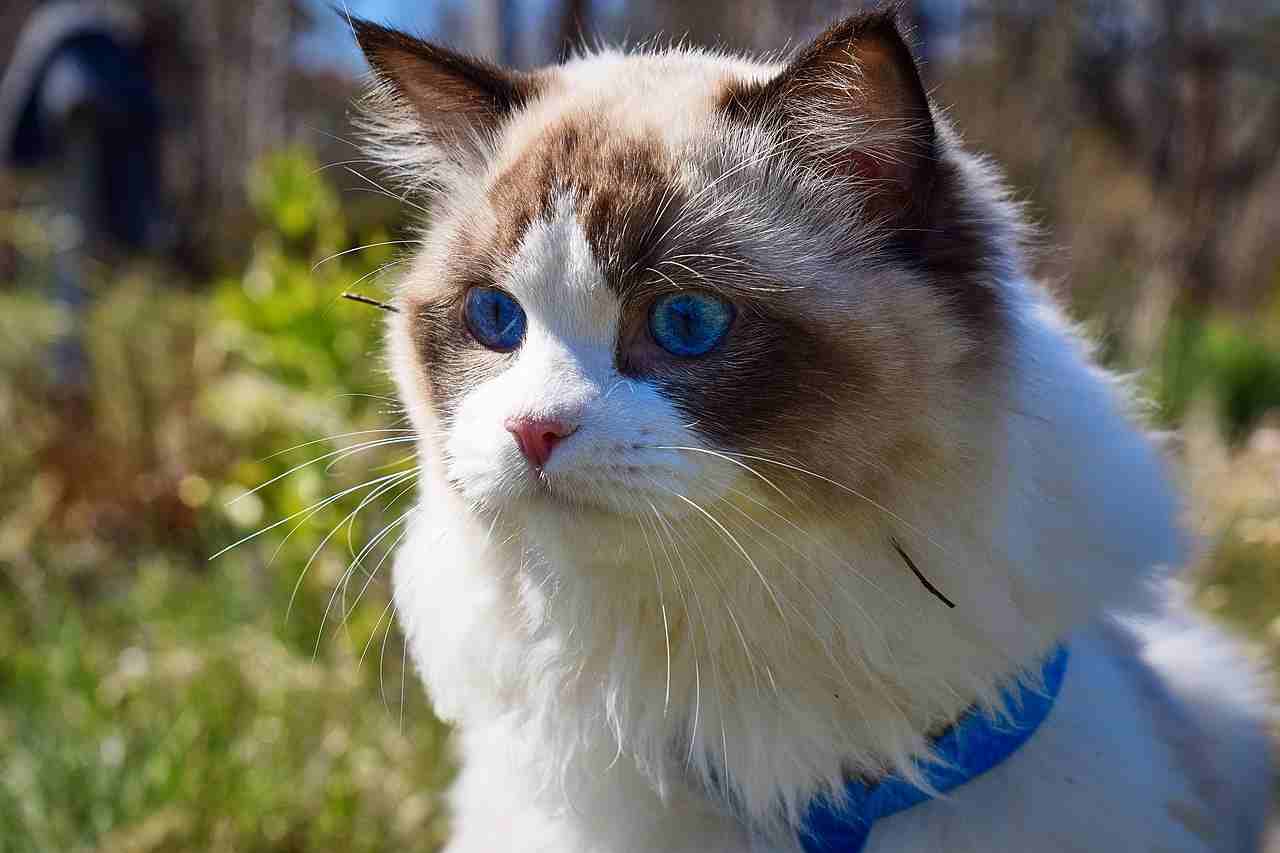
Siberian Cat:
Dense, semi-longhair coat with a thick, waterproof layer.
Round, expressive eyes, usually green or gold.
Medium to large size with a muscular build.
Bushy tail, often with a plume of fur.
Various color patterns and coat textures.
Ragdoll Cat:
Long, silky fur with color-point patterns (darker color on ears, face, paws, and tail).
Large, striking blue eyes that are almond-shaped.
Substantial size and a semi-cobby build.
Long, flowing tail.
Limited color variations, including seal, blue, chocolate, and lilac.
Comparison: Siberian cats exhibit a more varied coat in terms of color and texture, while Ragdoll cats are known for their specific color-point patterns and limited color range.
Ecological Implications: Siberian cats, with their dense, water-resistant fur, might have an advantage in colder climates, while Ragdolls, adapted to indoor living, may require more protection in harsh weather conditions.
3. Size:
Siberian Cat:
Medium to large size.
Males typically weigh 15-20 pounds.
Females are generally smaller, ranging from 8-15 pounds.
Ragdoll Cat:
Large size.
Male Ragdolls can weigh between 15-20 pounds or more.
Females are slightly smaller, ranging from 10-15 pounds.
Comparison: Ragdoll cats tend to be larger than Siberian cats, with both genders often surpassing the size of their Siberian counterparts.
Ecological Implications: The larger size of Ragdolls might provide advantages in intimidating potential predators, while the Siberian cat’s slightly smaller build may allow for more agility in certain environments.
4. Weight:
Siberian Cat:
Males: 15-20 pounds.
Females: 8-15 pounds.
Ragdoll Cat:
Males: 15-20 pounds or more.
Females: 10-15 pounds.
Comparison: Both Siberian and Ragdoll males have a similar weight range, but female Ragdolls tend to be larger than their Siberian counterparts.
Ecological Implications: Weight can impact a cat’s ability to climb and navigate different terrains; Ragdoll cats, being larger, may face challenges in more intricate environments.
5. Personality:
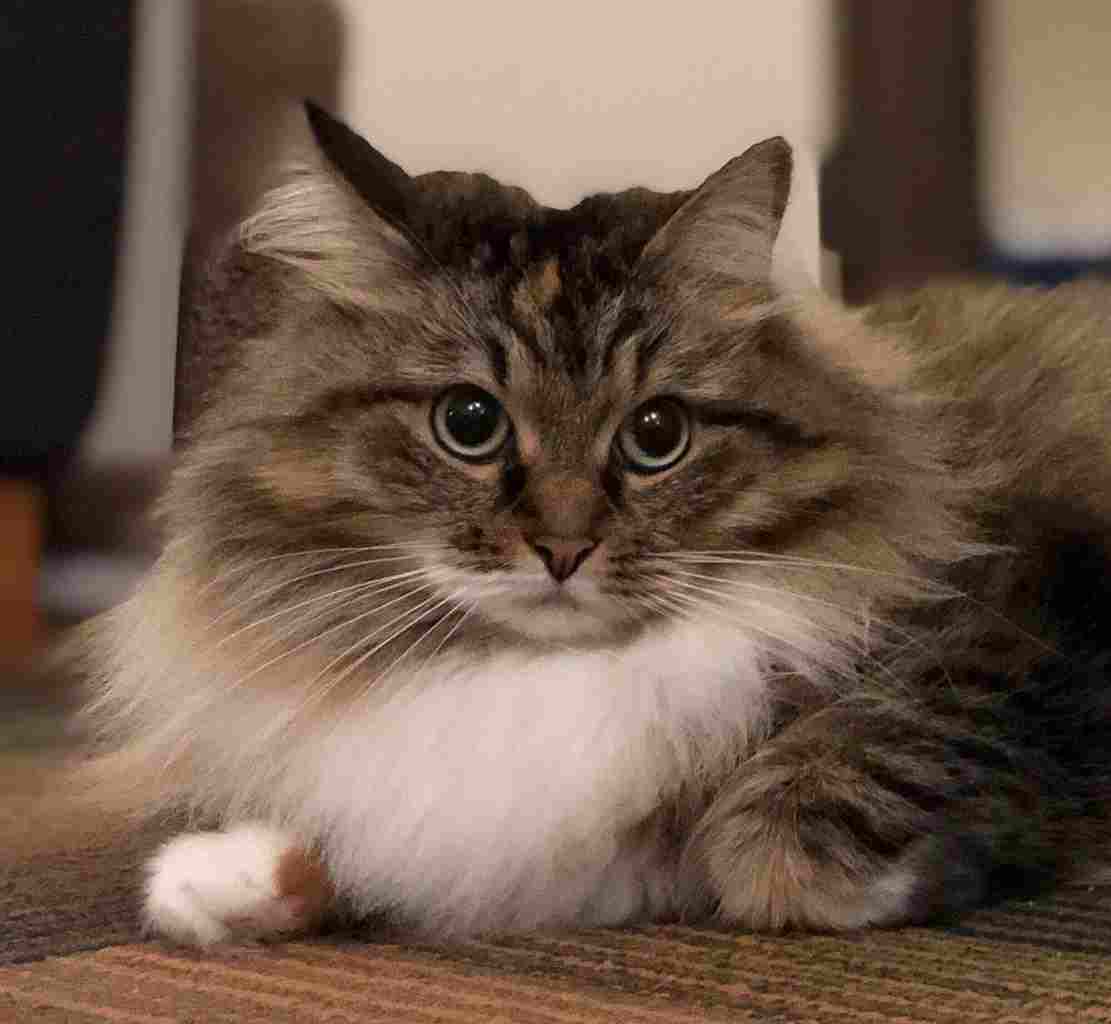
Siberian Cat:
Intelligent, playful, and social.
Affectionate with family members.
Enjoy interactive play and puzzle toys.
Generally good with children and other pets.
May exhibit dog-like behaviors, like fetching.
Ragdoll Cat:
Calm, gentle, and docile.
Relaxed temperament, earning them the name “puppy cats.”
Form strong bonds with owners.
Tend to go limp when picked up, hence the name “Ragdoll.”
Sociable and adaptable.
Comparison: While both breeds are known for their sociable nature, Siberian cats may be more playful and energetic, while Ragdolls are famous for their laid-back and relaxed demeanor.
Ecological Implications: A more playful nature in Siberian cats might contribute to increased hunting success, while the calm temperament of Ragdolls may help them avoid confrontations in the wild.
6. Relative Price/Cost:
Siberian Cat:
Prices vary but generally fall between $1,000 to $2,000.
Factors such as pedigree, breeder reputation, and location can influence the cost.
Ragdoll Cat:
Typically more expensive, ranging from $1,500 to $3,000 or more.
The pedigree, color, and breeder reputation play a significant role in pricing.
Comparison: Ragdoll cats tend to be more expensive than Siberian cats, with factors like breed purity and coat color impacting the cost.
Ecological Implications: In the wild, the cost of obtaining and maintaining territory or resources may influence the ecological niche each cat occupies.
7. Grooming and Maintenance Requirements:
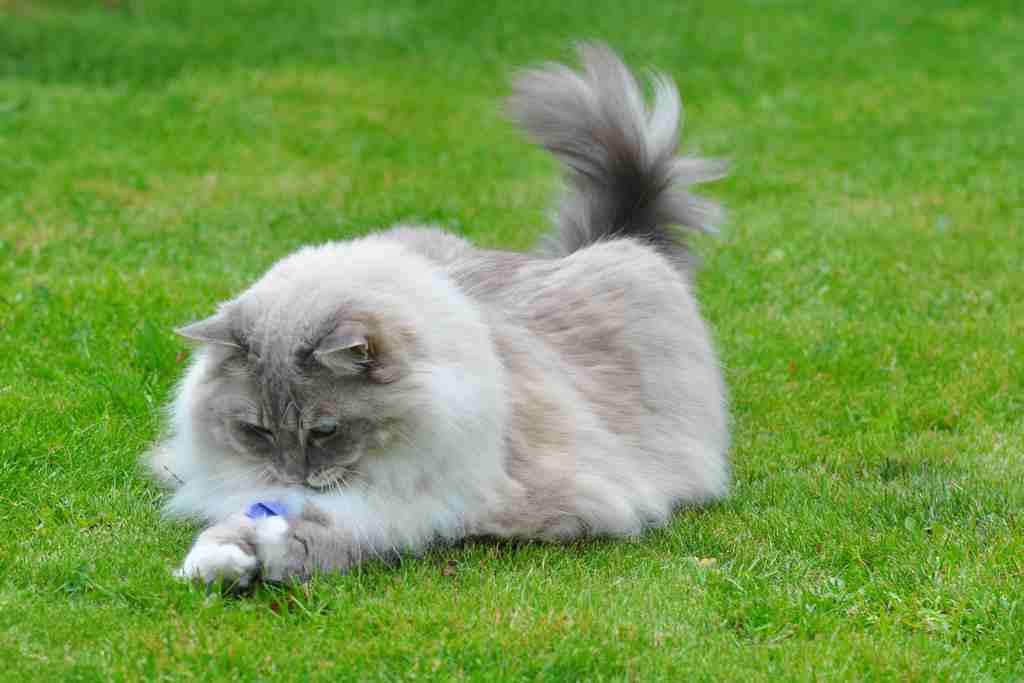
Siberian Cat:
Regular brushing to prevent matting, especially during shedding seasons.
Bathing may be needed occasionally.
Trim nails and check ears regularly.
Ragdoll Cat:
Daily brushing to prevent matting, particularly on the long coat.
Bathing may be necessary, but Ragdolls often tolerate it well.
Regular nail trimming and ear cleaning.
Comparison: Both breeds require regular grooming, with Ragdoll cats needing more attention due to their longer coats.
Ecological Implications: Grooming habits in the wild would be crucial for maintaining insulation and camouflage, impacting the hunting and survival strategies of each breed.
8. Health Concerns:
Siberian Cat:
Generally robust and healthy.
May be prone to hypertrophic cardiomyopathy (heart condition).
Regular veterinary check-ups recommended.
Ragdoll Cat:
Generally healthy breed.
May be predisposed to hypertrophic cardiomyopathy.
Regular veterinary care, including heart checks, is important.
Comparison: Both Siberian and Ragdoll cats share a susceptibility to hypertrophic cardiomyopathy, but overall, they are considered healthy breeds.
Ecological Implications: In the wild, these health considerations could impact their ability to compete for resources and survive predation.
9. Bite Force (PSI):
Siberian Cat:
Average bite force PSI: Not well-documented for domestic cats.
Domestic cats, in general, have a moderate bite force.
Ragdoll Cat:
Average bite force PSI: Not well-documented for domestic cats.
Domestic cats, in general, have a moderate bite force.
Comparison: There is limited information on the specific bite force of Siberian and Ragdoll cats, but both are likely to fall within the range typical for domestic cats.
Ecological Implications: Bite force is crucial in the wild for hunting and self-defense, and the moderate bite force of domestic cats may impact their ability to catch prey or fend off predators.
10. Physical Offensive Advantages:
Siberian Cat:
Strong and agile, excelling in climbing and hunting.
Muscular build aids in capturing prey.
Sharp retractable claws for climbing and gripping.
Ragdoll Cat:
Larger size may be an advantage in intimidating potential threats.
Strong hind legs for leaping.
Sharp claws for self-defense.
Comparison: Siberian cats may have an advantage in agility and climbing, while the larger size of Ragdoll cats could be advantageous in confrontations.
Ecological Implications: These physical advantages would play a role in the hunting strategies and territorial behavior of each breed in the wild.
11. Physical Defensive Advantages:
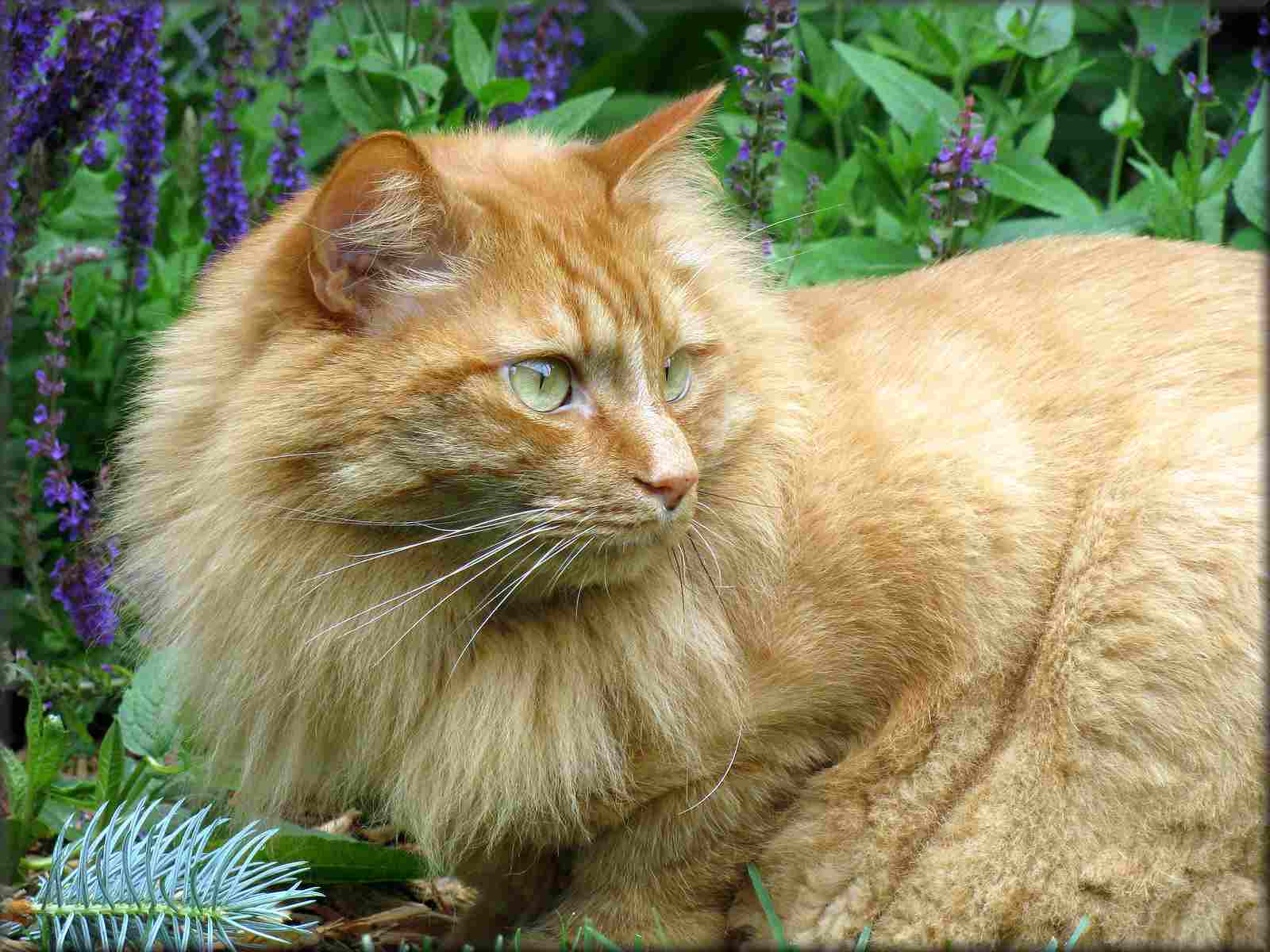
Siberian Cat:
Agile and quick, able to escape threats easily.
Thick, water-resistant fur provides some protection.
Excellent hearing and night vision for early detection of predators.
Ragdoll Cat:
Laid-back temperament may help avoid confrontations.
Thick fur offers some protection.
Good agility and quick reflexes.
Comparison: Both breeds have defensive features, with Siberian cats relying on agility and senses, while Ragdoll cats may use their temperament to avoid conflicts.
Ecological Implications: Survival strategies in the wild would involve a combination of these defensive traits, impacting their ability to avoid predators and other threats.
12. Speed (Km/hour or Mile/hour):
Siberian Cat:
Estimated top speed of 30 mph (48 km/h).
Quick and agile, suitable for hunting.
Ragdoll Cat:
Estimated top speed of 25 mph (40 km/h).
Good speed, especially for a larger breed.
Comparison: Siberian cats are generally faster, likely due to their more active and playful nature, compared to the slightly slower but still agile Ragdoll cats.
Ecological Implications: Speed is crucial in hunting and evading predators; the faster speed of the Siberian cat might influence its choice of prey and hunting strategy.
13. Agility:
Siberian Cat:
Highly agile and nimble.
Can climb trees and navigate various terrains effectively.
Excellent balance.
Ragdoll Cat:
Agile despite their larger size.
Good at leaping and navigating indoor environments.
Moderate balance.
Comparison: Siberian cats are generally more agile, especially in outdoor settings, compared to Ragdoll cats.
Ecological Implications: Agility is crucial for survival in the wild, impacting hunting success and the ability to escape predators. The greater agility of Siberian cats might give them an edge in certain ecological niches.
14. Senses:
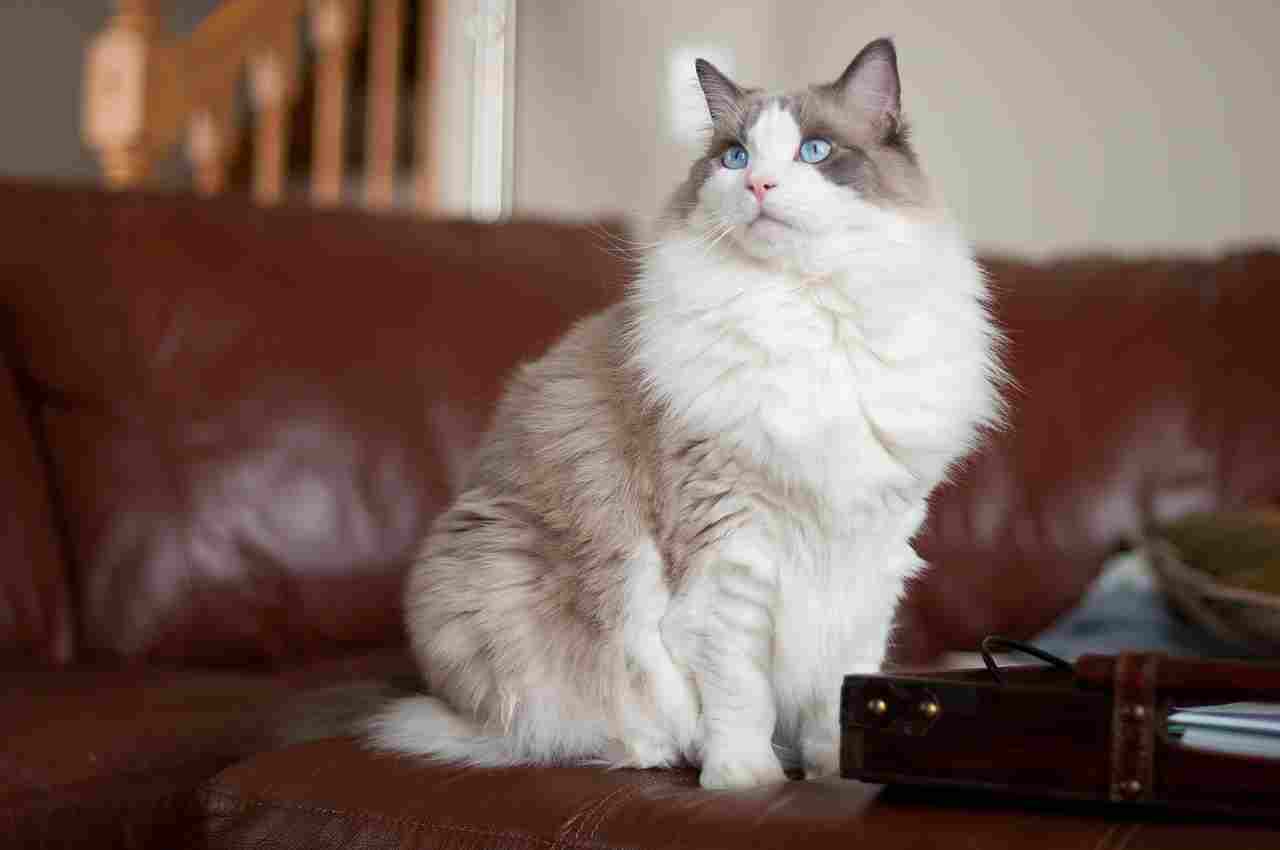
Siberian Cat:
Excellent night vision for hunting.
Keen sense of hearing to detect prey or threats.
Well-developed sense of smell for tracking.
Ragdoll Cat:
Good night vision.
Sensitive hearing for early detection of sounds.
Adequate sense of smell for basic tracking.
Comparison: Both breeds possess heightened senses, with Siberian cats potentially having a more finely tuned sense of smell for tracking.
Ecological Implications: Enhanced senses are critical for survival in the wild, influencing a cat’s ability to locate prey, detect predators, and navigate their environment.
15. Overall Physical Capacity:
Siberian Cat:
Muscular build for strength and agility.
Robust and enduring.
Adapted to colder climates with a dense, insulating coat.
Ragdoll Cat:
Larger size for a more imposing presence.
Strong and sturdy build.
Well-adapted to indoor living conditions.
Comparison: Siberian cats exhibit a balance of strength and agility, while Ragdoll cats leverage their larger size for a more formidable physical presence.
Ecological Implications: The overall physical capacity of each breed would influence their ability to compete for resources and survive in different ecological niches.
16. Habitat Preference(s):
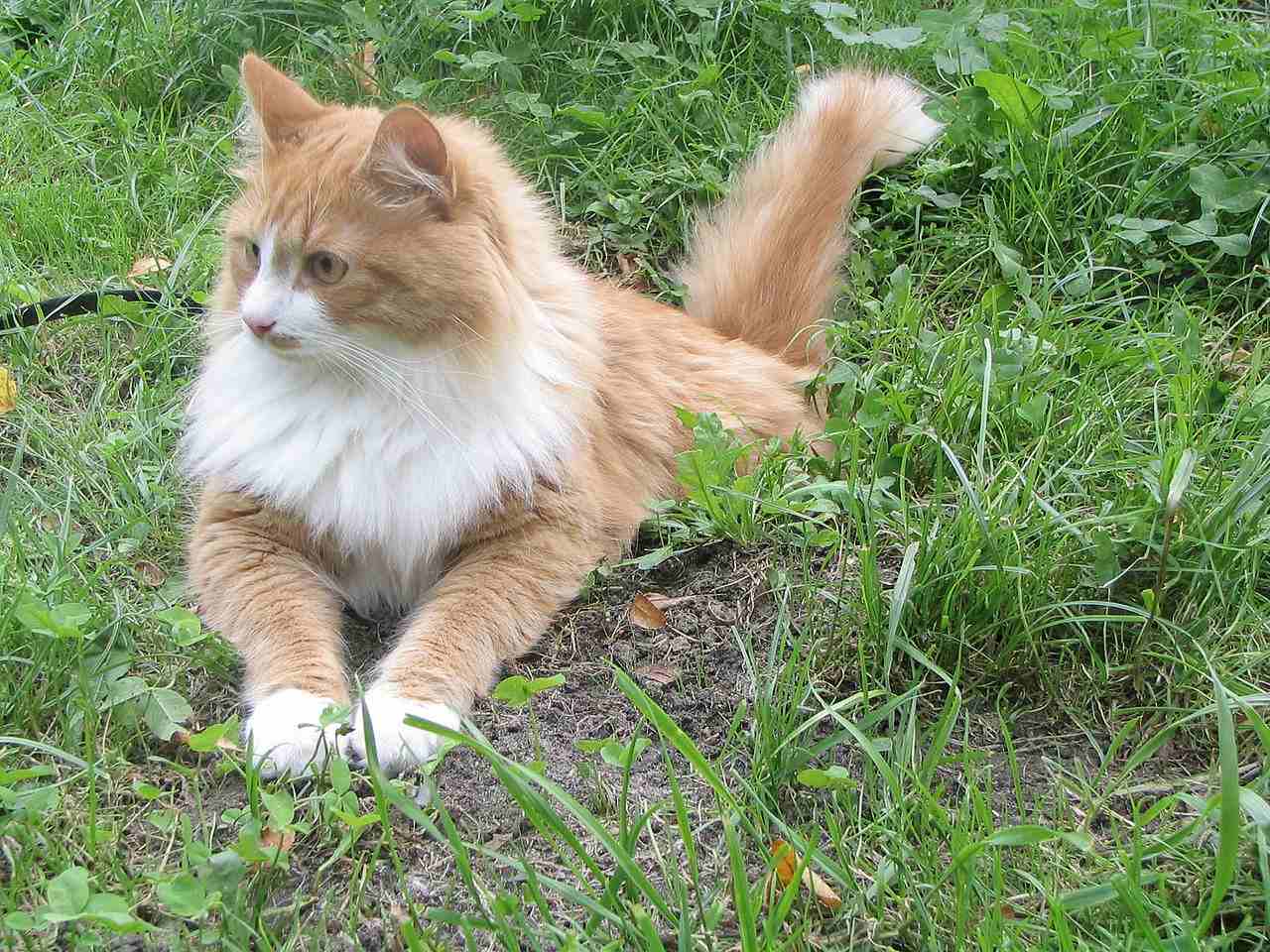
Siberian Cat:
Well-adapted to diverse environments.
Can thrive in colder climates due to their thick coat.
Comfortable in both indoor and outdoor settings.
Ragdoll Cat:
Well-suited for indoor living.
Prefers a controlled environment due to its long coat.
May struggle in extreme weather conditions.
Comparison: Siberian cats are more versatile, thriving in various environments, while Ragdoll cats are better suited for indoor living.
Ecological Implications: Habitat preferences would dictate the geographical distribution and ecological roles each breed might occupy in the wild.
17. Tracks:
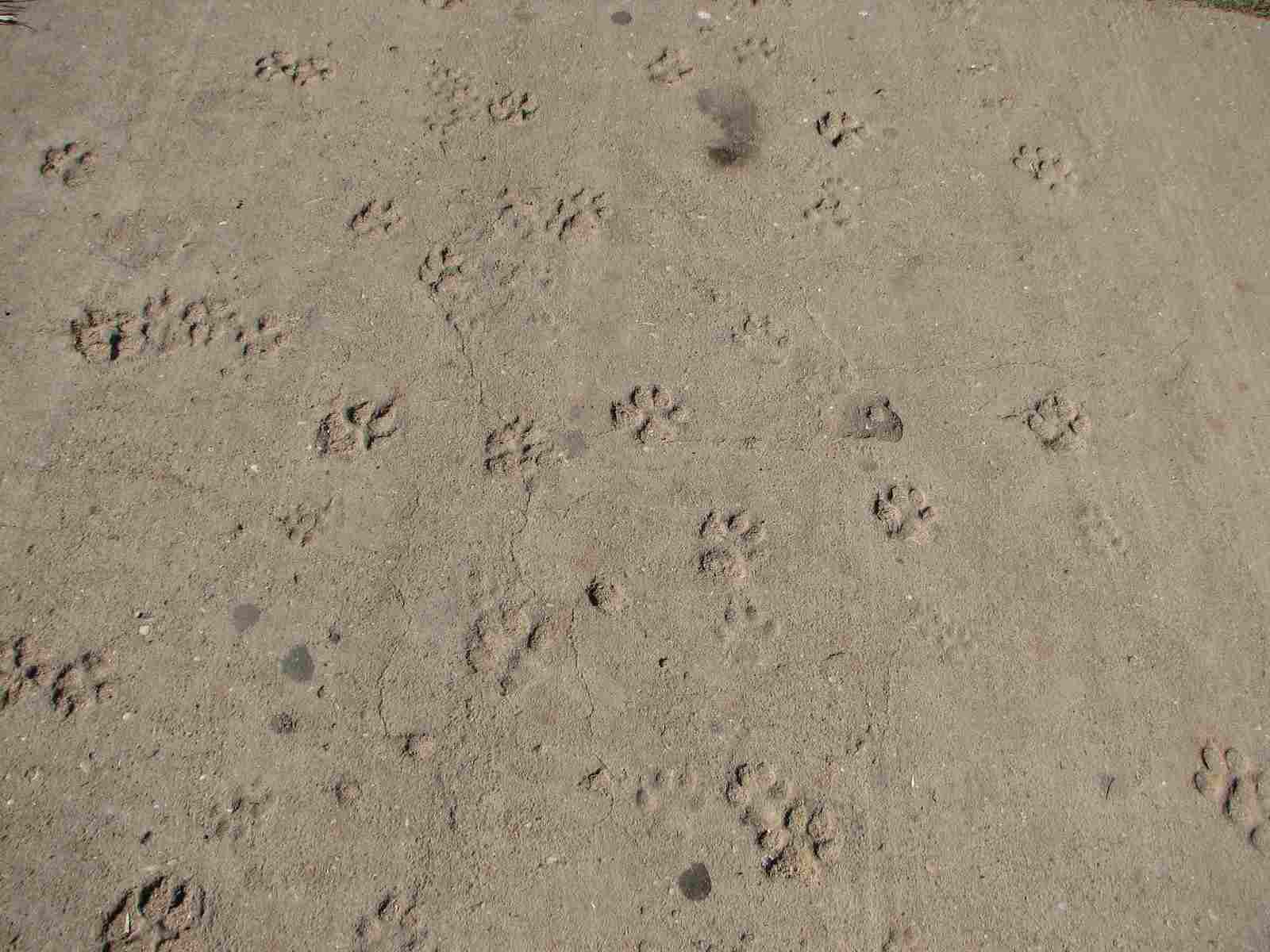
Siberian Cat:
Compact paw prints with sharp claw marks.
Typically four toes visible in both front and hind prints.
Distinctive trail due to the cat’s agility.
Ragdoll Cat:
Larger paw prints with less prominent claw marks.
Usually four toes visible in both front and hind prints.
Tracks may show a more relaxed gait.
Comparison: Both breeds leave distinctive tracks, but the size and claw marks in the prints can differ.
Ecological Implications: Tracking patterns can influence hunting success and territorial behavior in the wild. The differences in tracks may indicate variations in their hunting strategies and movement patterns.
18. Lifespan:
Siberian Cat:
Average lifespan ranges from 12 to 15 years.
Factors such as genetics, diet, and overall care can influence lifespan.
Ragdoll Cat:
Average lifespan ranges from 12 to 17 years.
Well-maintained health and proper care contribute to longevity.
Comparison: Ragdoll cats generally have a slightly longer average lifespan compared to Siberian cats.
Ecological Implications: Lifespan affects the breeding and reproductive strategies of each breed in the wild, impacting population dynamics.
19. Natural Mode of Feeding:
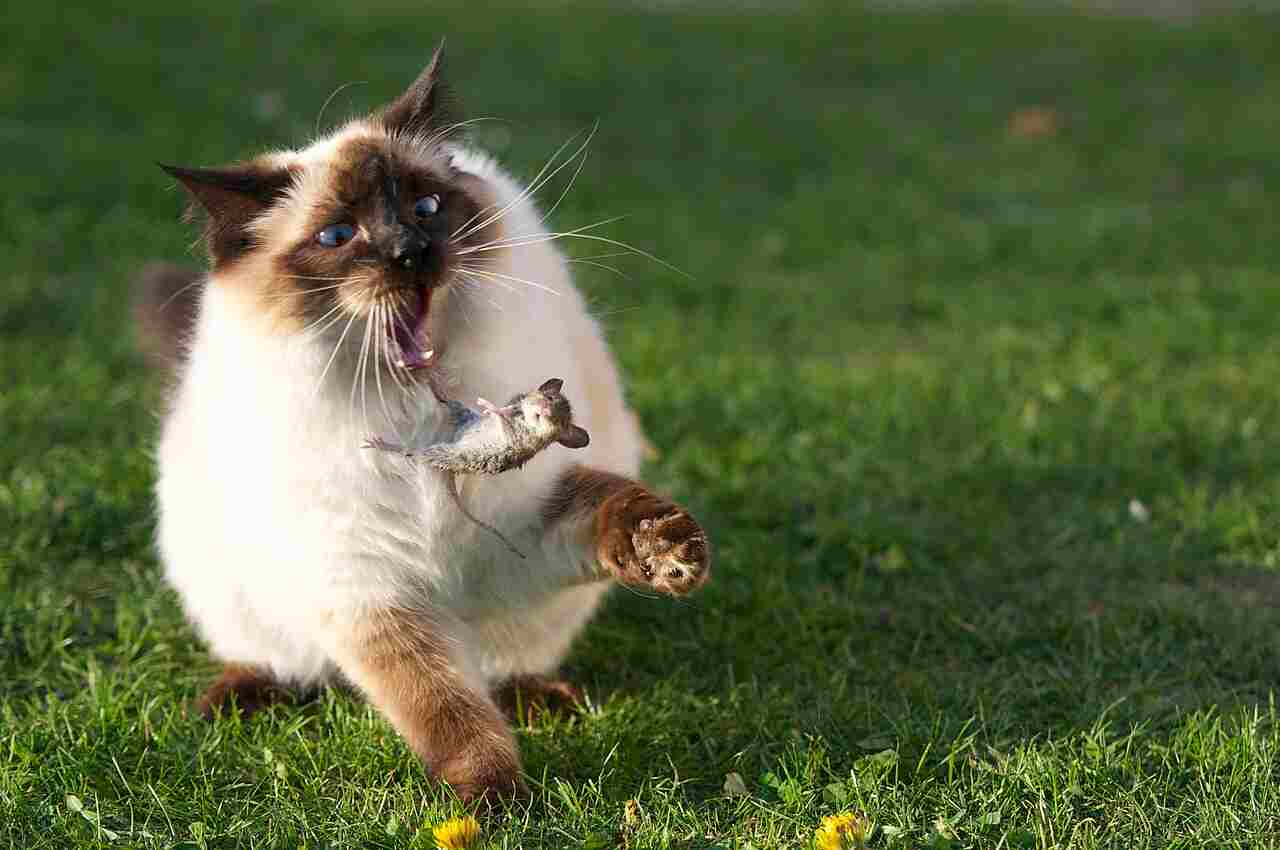
Siberian Cat:
Carnivorous diet, hunting small mammals and birds.
Adapted to consume a variety of prey.
Ragdoll Cat:
Carnivorous diet, primarily dependent on commercially available cat food.
Less likely to exhibit strong hunting instincts compared to Siberian cats.
Comparison: Siberian cats are likely to have stronger hunting instincts and a more diverse diet due to their history of fending for themselves, while Ragdoll cats are more dependent on domestic feeding.
Ecological Implications: The natural mode of feeding would influence the ecological role each breed plays, affecting prey populations and ecosystem dynamics.
20. Best Food as a Pet:
Siberian Cat:
High-quality commercial cat food.
May benefit from a diet with additional protein.
Ragdoll Cat:
Balanced, high-quality cat food.
May require portion control to prevent overeating.
Comparison: Both breeds benefit from a balanced, high-protein diet, with slight variations in dietary needs.
Ecological Implications: In the wild, the availability and type of food sources would shape the ecological niche each cat occupies.
21. Intelligence:
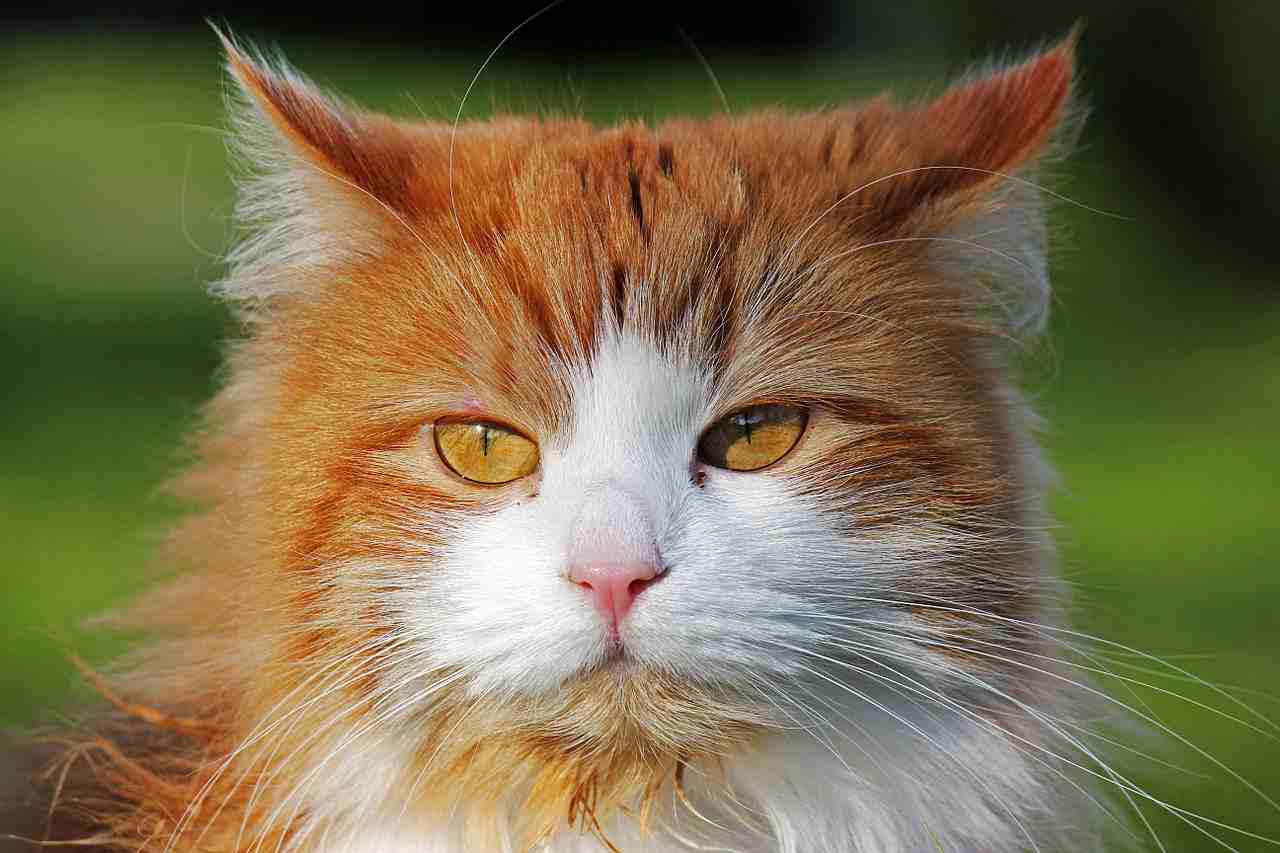
Siberian Cat:
Highly intelligent, problem-solving abilities.
Quick learners and can understand routines.
Ragdoll Cat:
Intelligent, but known for a more laid-back demeanor.
May not display as much interest in interactive puzzles.
Comparison: Siberian cats may exhibit more active problem-solving behaviors, while Ragdoll cats are known for their calm and relaxed approach to learning.
Ecological Implications: Intelligence influences hunting strategies, adaptation to environmental changes, and overall survival skills in the wild. The differing intelligence levels may impact their ecological roles and success in different environments.
22. Social Behavior:
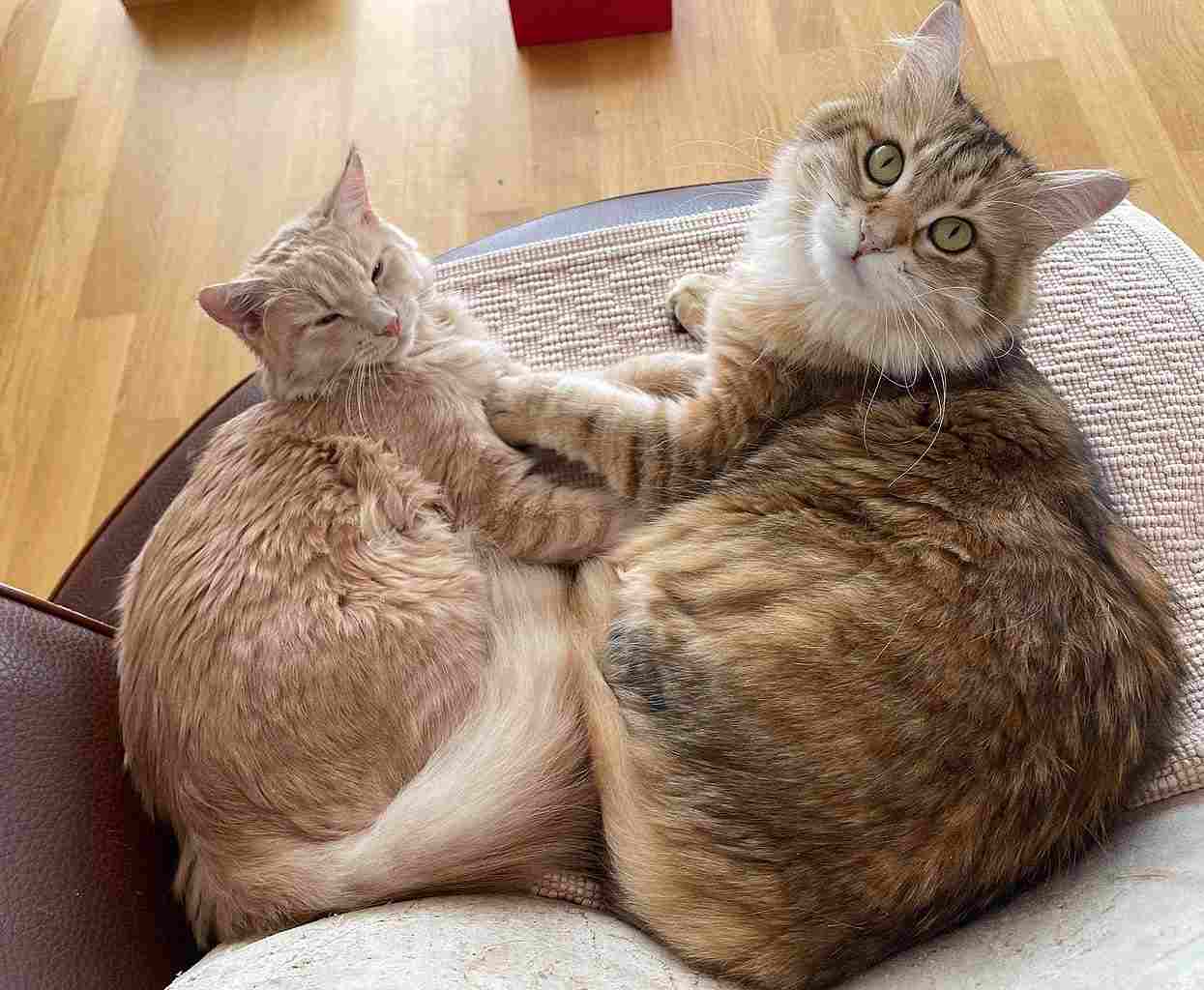
Siberian Cat:
Social and friendly, forming strong bonds with family members.
Generally good with children and other pets.
Enjoys interactive play and attention.
Ragdoll Cat:
Extremely social and affectionate.
Develops close bonds with owners.
Adaptable to various social settings.
Comparison: Both breeds exhibit social behavior, with Ragdoll cats being particularly known for their affectionate nature.
Ecological Implications: Social behavior influences group dynamics, territory sharing, and cooperation in the wild, impacting the ecological roles of each breed.
23. Mode of Reproduction:
Siberian Cat:
Typically sexually reproducing, with litters of kittens.
Gestation period lasts around 63 days.
Ragdoll Cat:
Similar to Siberian cats, reproduces sexually.
Average gestation period is approximately 63-67 days.
Comparison: Both breeds share a similar mode of reproduction, with sexually reproducing individuals giving birth to litters of kittens.
Ecological Implications: Reproductive strategies impact population dynamics and competition for resources in the wild.
24. Parental Behavior:
Siberian Cat:
Shows strong maternal instincts.
Takes an active role in caring for and protecting kittens.
Ragdoll Cat:
Generally exhibits good maternal instincts.
Active in nurturing and protecting their offspring.
Comparison: Both Siberian and Ragdoll cats display nurturing parental behavior, ensuring the well-being of their kittens.
Ecological Implications: Parental care is crucial for the survival of offspring in the wild, influencing the overall success of each breed in sustaining populations.
25. Proximity to Human-Inhabited Areas:
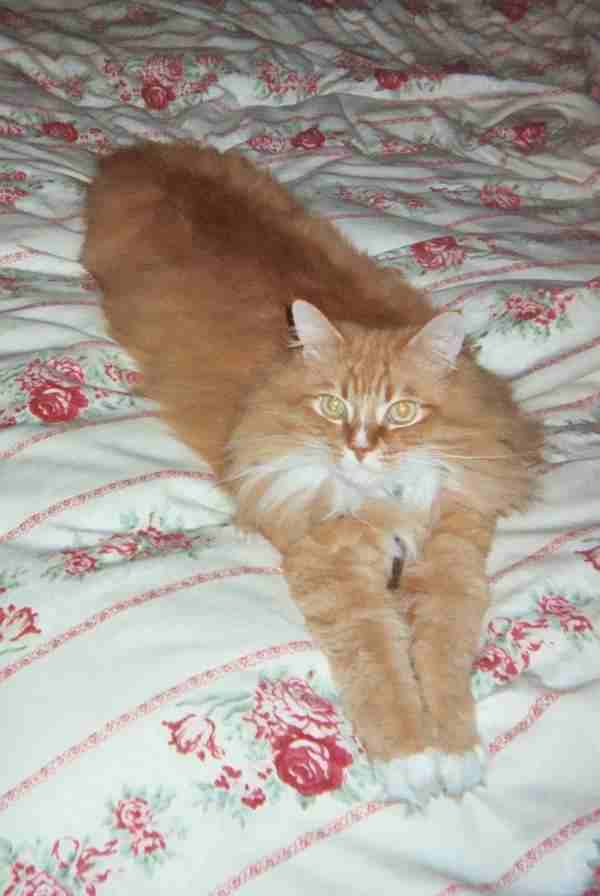
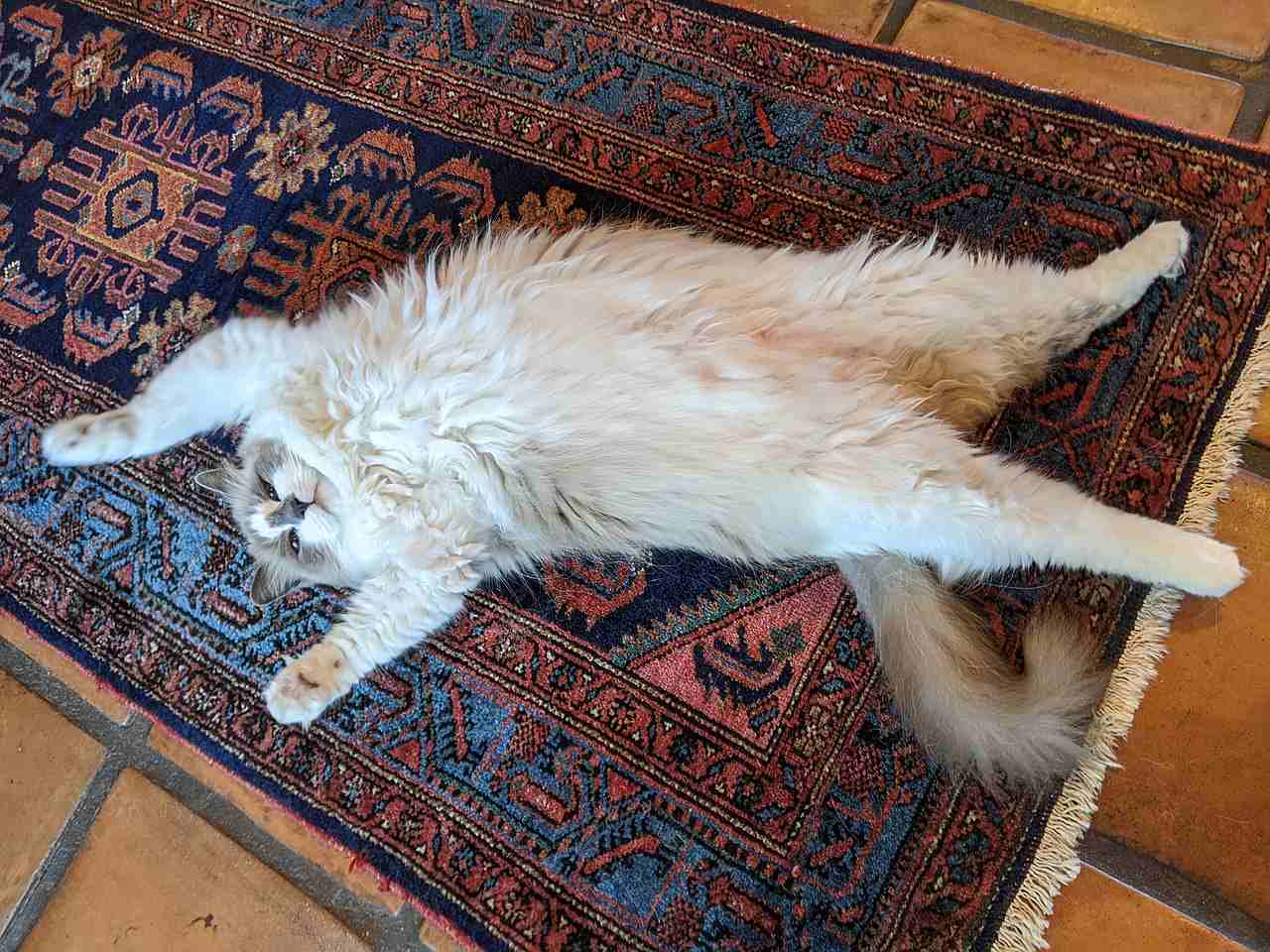
Siberian Cat:
Adaptable to living in both rural and urban environments.
Social nature makes them well-suited for households.
Ragdoll Cat:
Well-suited for indoor living in urban or suburban settings.
Social and adaptable to human-inhabited areas.
Comparison: Both breeds are adaptable to living in proximity to humans, with Siberian cats being more versatile in various environments.
Ecological Implications: Adaptability to human-inhabited areas influences the ecological niche each cat occupies, potentially impacting local wildlife and ecosystems.
26. Behavior Toward Humans:
Siberian Cat:
Affectionate and friendly towards family members.
Enjoys interactive play and attention.
May form strong bonds with specific individuals.
Ragdoll Cat:
Extremely affectionate and often seeks human companionship.
Can be more relaxed and laid-back in their interactions.
Forms deep bonds with their owners.
Comparison: Both breeds are generally affectionate towards humans, but Ragdoll cats are particularly known for their intense desire for human companionship.
Ecological Implications: The behavior towards humans could impact interactions with other species and the utilization of human-provided resources in anthropogenic landscapes.
27. Danger Posed to Humans:
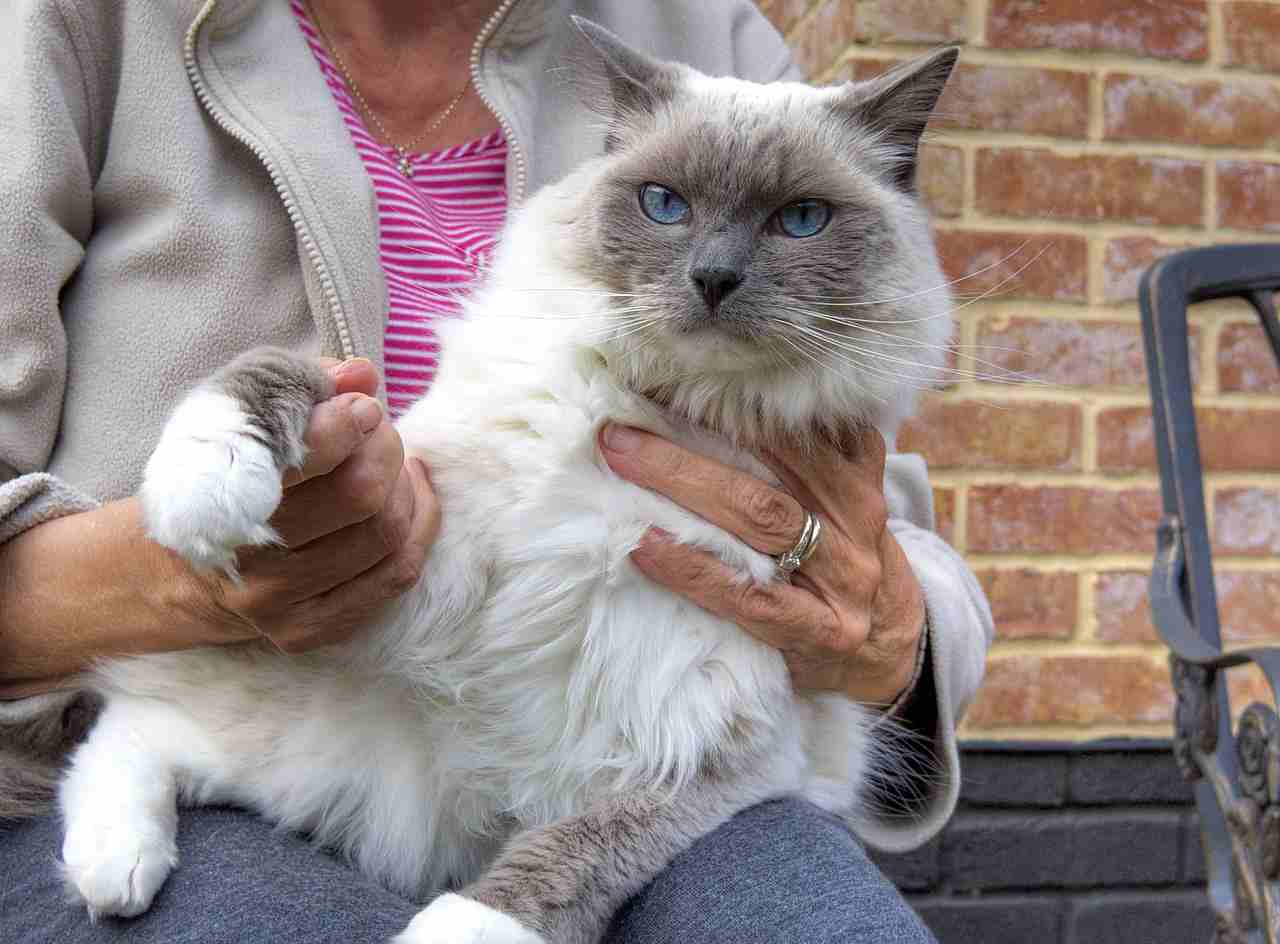
Siberian Cat:
Generally poses no significant danger to humans.
May exhibit playful behaviors that could be misinterpreted but is not aggressive.
Ragdoll Cat:
Low danger to humans; known for their gentle temperament.
Unlikely to display aggressive behavior unless provoked.
Comparison: Both Siberian and Ragdoll cats are low in danger to humans, with a minimal risk of aggressive behavior.
Ecological Implications: In the wild, reduced aggression towards humans might influence the likelihood of conflict in shared habitats.
28. Associated Precautions:
Siberian Cat:
Regular veterinary check-ups for overall health.
Attention to dental care due to their susceptibility to dental issues.
Monitoring outdoor activities to prevent exposure to potential hazards.
Ragdoll Cat:
Regular veterinary check-ups for health maintenance.
Grooming attention due to their long fur.
Indoor living may require considerations for mental stimulation.
Comparison: Both breeds require regular veterinary care and attention to specific aspects of their well-being.
Ecological Implications: In the wild, these precautions might translate to natural behaviors that aid in the adaptation and survival of each breed.
29. Conservation Status:
Siberian Cat:
Not listed as endangered or threatened.
Popularity as a domestic breed contributes to conservation through responsible breeding.
Ragdoll Cat:
Not listed as endangered or threatened.
Conservation efforts focus on responsible breeding practices.
Comparison: Neither breed is listed as endangered or threatened, as they are domesticated and bred in controlled environments.
Ecological Implications: Conservation status in domestic breeds pertains more to responsible breeding practices and the prevention of genetic issues rather than wild conservation efforts.
Summary of Comparison
Appearance:
Siberian: Varied coat colors and textures.
Ragdoll: Color-point patterns with limited variations.
Size:
Siberian: Medium to large.
Ragdoll: Large.
Weight:
Siberian: Males 15-20 lbs, Females 8-15 lbs.
Ragdoll: Males 15-20+ lbs, Females 10-15 lbs.
Personality:
Siberian: Playful, social, may exhibit dog-like behaviors.
Ragdoll: Calm, docile, affectionate, “puppy cat” demeanor.
Relative Price/Cost:
Siberian: $1,000-$2,000.
Ragdoll: $1,500-$3,000+.
Grooming and Maintenance:
Both require regular grooming; Ragdoll needs more attention.
Health Concerns:
Both may be prone to hypertrophic cardiomyopathy.
Bite Force (PSI):
Limited documented data, moderate for domestic cats.
Physical Offensive Advantages:
Siberian: Agile, strong, sharp claws.
Ragdoll: Larger size, strong hind legs.
Physical Defensive Advantages:
Siberian: Agile, thick fur, keen senses.
Ragdoll: Laid-back demeanor, thick fur, agility.
Speed:
Siberian: Estimated 30 mph.
Ragdoll: Estimated 25 mph.
Agility:
Siberian: Highly agile, good balance.
Ragdoll: Agile despite larger size.
Senses:
Both have good night vision, hearing, and sense of smell.
Overall Physical Capacity:
Siberian: Muscular, enduring, adapted to colder climates.
Ragdoll: Larger size, strong, adapted to indoor living.
Habitat Preference(s):
Siberian: Adaptable to various environments.
Ragdoll: Suited for indoor living.
Tracks:
Distinctive tracks for both; size and claw marks differ.
Lifespan:
Siberian: 12-15 years.
Ragdoll: 12-17 years.
Natural Mode of Feeding:
Both carnivorous, Siberian may have stronger hunting instincts.
Best Food as a Pet:
Both need a balanced, high-protein diet.
Intelligence:
Siberian: Highly intelligent, problem-solving.
Ragdoll: Intelligent but laid-back.
Social Behavior:
Both social, Ragdoll exceptionally affectionate.
Mode of Reproduction:
Both sexually reproducing with litters of kittens.
Parental Behavior:
Both show strong maternal instincts.
Proximity to Human-Inhabited Areas:
Siberian: Adaptable to rural and urban.
Ragdoll: Suited for indoor living.
Behavior Toward Humans:
Both affectionate, Ragdoll extremely so.
Danger Posed to Humans:
Low danger for both breeds.
Associated Precautions:
Regular veterinary care and specific attention to grooming.
Conservation Status:
Neither listed as endangered or threatened.
Conclusion
I). Similarities:
Both Siberian and Ragdoll cats are domesticated breeds with origins in Felis catus.
They share similarities in social behavior, adaptability to human-inhabited areas, and a low danger posed to humans.
II). Differences:
Ragdoll cats are generally larger and more laid-back, while Siberian cats are more agile and playful.
Siberian cats have a wider habitat preference, adapting to various environments, while Ragdoll cats are better suited for indoor living.
Lifespan is slightly longer for Ragdoll cats.
Ragdoll cats exhibit a more intense desire for human companionship.
